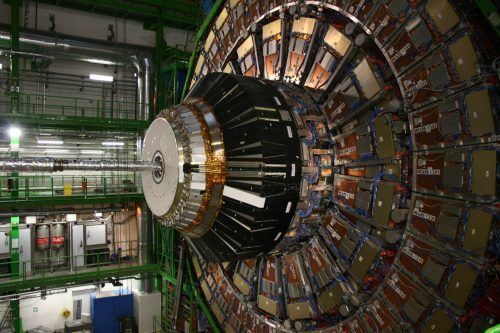The new detector will be dedicated to studying the nature of dark matter

The atomic chip group from Ben-Gurion University of the Negev led by Prof. Ron Pullman (www.bgu.ac.il/atomchip), recently won a research grant from the American Academy of Sciences (NSF), together with the Israeli-American Research Cooperation Fund (BSF) for the search for dark matter. This is a bi-national proposal in which the American researcher Derek Jackson Kimball from California State University is a partner. As part of the project, an advanced particle detector will be built at the university.
Experts from the university in the fields of atomic spectroscopy, magnetic detectors, lasers and optics, atomic clocks and advanced electronics will take part in the project. Among others, Prof. Reuven Shoker (head of the quantum magnetometry group), Dr. David Lebron, Dr. Andrey Ben-Amar Baranga, Dr. David Groswasser, Dr. Mani Givon and Dr. Assaf Gross will take part in the project.
It should be noted that astronomical observations lead to the conclusion that a very large amount of matter in the universe does not emit light at all and therefore we cannot see it directly with the help of our telescopes. Other ways to discover this material are therefore required and this is the essence of the new detector.

4 תגובות
Leave nonsense, it's a shame this research does not have dark matter. Its theoretical creation is a sin, a sin of changing the dimensions measured in the universe so that they fit the "holy" formula of gravitation. They will explore other things there.
I meant the article in the link Herzl attached.
This study only proves that the sample of the specific galaxies examined does not have significant dark matter.
There are other options for dark matter.
There is no dark matter.
It turned out that the measurements that "discovered" the dark matter were wrong. See:
https://phys.org/news/2017-02-team-radial-common-galaxies.html
(This is a simplified description. You can access the original article from there).
In modern telescopes with infrared detectors it is possible to measure the masses of stars in galaxies precisely, due to the fact that light is seen scattering in interstellar dust. This was not possible when dark matter was "discovered" and the measurements at that time were wrong.
Whoever reads the article will see that in the article there is still a small deviation from perfect Newtonian motion, which can be easily explained with black holes that are not visible at all but add mass.
It's just that the herd is still running in the direction set decades ago...